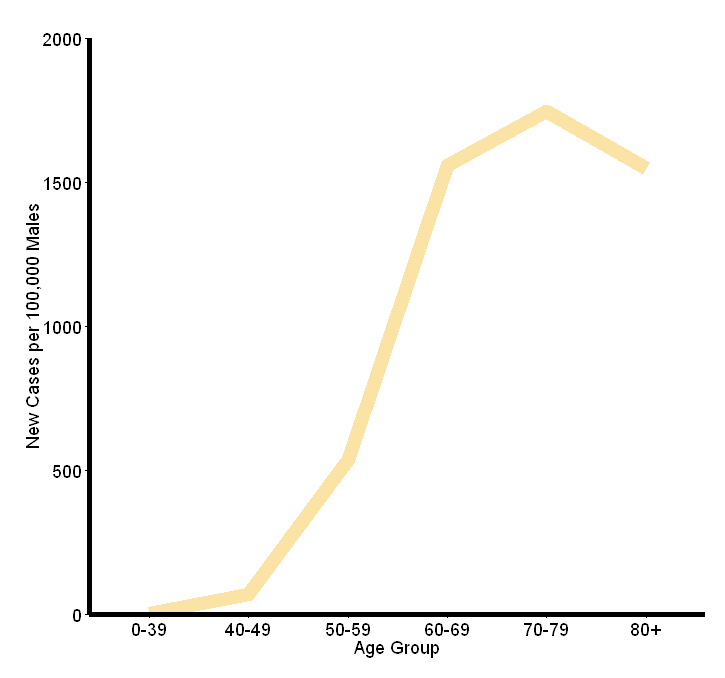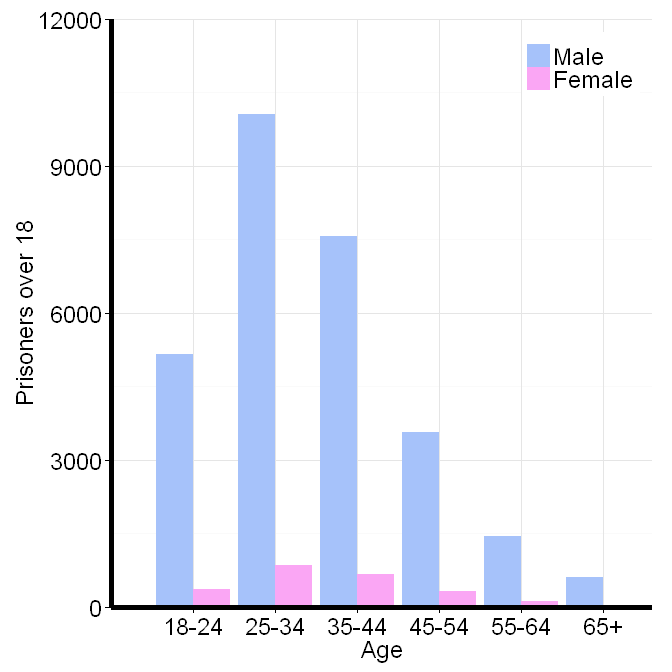Crime and cancer, what’s the common ground?
Australia has a growing population. Australia also has an ageing population. Understanding changes in the population profile over time is critical to understanding trends, and hence to developing reliable forecasts. Here we discuss two examples - the first relates to rates of cancer diagnoses, which are increasing as the population ages, and the second relates to the demand for criminal Court facilities. Whilst they are two very different subjects, the same principles apply.

Each year, more new prostate cancer cases are diagnosed than the year before. In 2010, 30% of new cancers in males were prostate cancer, up substantially from 1990 (18%). On the surface, it appears that the incidence rate is on the rise. However, there are other factors to consider.
Prostate cancer has a higher incidence amongst elderly men as the figure shows. As the proportion of older people in the population increases, the incidence of prostate cancer is expected to increase. Increased detection rates could also explain an increased apparent incidence rate. Campaigns such as Movember have brought men’s health into the spotlight, and early detection of prostate cancer is more likely than ever before. However, at some point the detection rate will stabilise. It is clear that understanding the underlying population trends is crucial for forecasting rates of new diagnoses.

The same logic applies to demand for criminal Court resources. Data Analysis Australia has a history of working with the Courts to create forecasts for resources such as courtrooms. For this, it is essential to incorporate detailed knowledge of the age and sex profile of those who appear in Court, some of whom subsequently end up in prison. For criminal matters, that is typically males aged 18-30. An increase in demand at a criminal Court facility may lead to claims of the population becoming less law-abiding. However, this increase could simply be due to growth in this age group being above and beyond general population increase, for example due to a relatively higher immigration rate. Such relationships with the population profile must be understood to develop an accurate forecast of Court demand.
Irrespective of the application, a key aspect of creating long term forecasts is the selection of an appropriate population projection to use as the underlying base. Numerous sources of population projections exist, with differing assumptions on future life expectancy and immigration rates. The projections also have differing forecast periods, such as short or long term, and different levels of geographical detail. Data Analysis Australia has considerable expertise in this area and for each forecast we consider these aspects and their direct influence on the subject matter to produce a fit-for-purpose forecast solution for our clients.
If you are planning for the future, Data Analysis Australia has the expertise to help. For more information see Our Services.
December 2014
